Creating products as a vendor using Dokan is super easy. After your vendor registers on your marketplace, they can easily create products and customize them from an intuitive dashboard.
So check out the documentation to know the process of creating products:-
Create a product from the Vendor dashboard
To create a product, navigate to the vendor dashboard. And then click on Products from the left menu. After that click on the Add New Products button from the top right corner.
You’ll get a new window where you will be able to create a new product giving all the details only.

New Update for Dokan Lite Version 3.8.2: One Page Product Creation Form
Before this version, vendors had to go through a two-step process to create a product. With this release, a single-page product creation form has been introduced.
To enable this feature, you need to navigate to the WordPress admin panel → Dokan → Settings → Selling Options → One Page Product Creation.

Here is what the new product creation form process will look like-
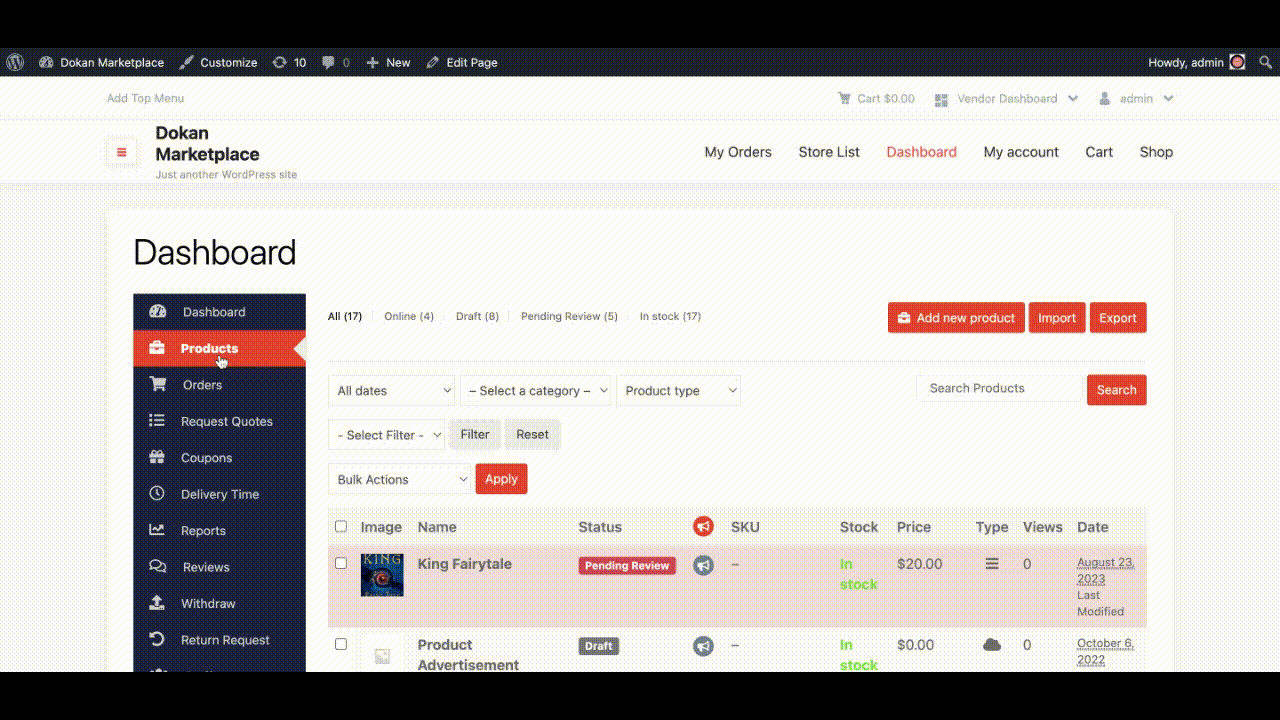
Note:
It’s important to note that in the next version of Dokan, the Add New Product popup and the Add New Product form will be removed. After that, the Single-Page product form will be the default system for creating a product from the vendor dashboard.
Basic Details
The common information about a product are the title, price, description. Discount price is optional. You can even schedule discounts for a certain amount of time. You can enter a starting date and end date to apply automatic discounts to your product.
Both the categories and tags have to be created by the admin. The vendor can only select them from the frontend dashboard. Because allowing the vendors to create categories and tags might result into duplicates.
Select Category
By default, category selection is singular. That is why there is a drop-down field to select a category. This should be the standard-setting. Because according to Google Webmaster Guidelines and other SEO and UX best practices, it is recommended to have only one category assigned to a product.
If you need to show your products based on multiple factors or for searching or sorting feature, you can use tags.
Vendors need to select the category from the drop-down.
If you really need multiple categories in a single product, then it can be enabled from wp-admin → Dokan → Settings → Selling Options → Category Selection.
Admins need to create the categories from wp-admin→Products→Categories.
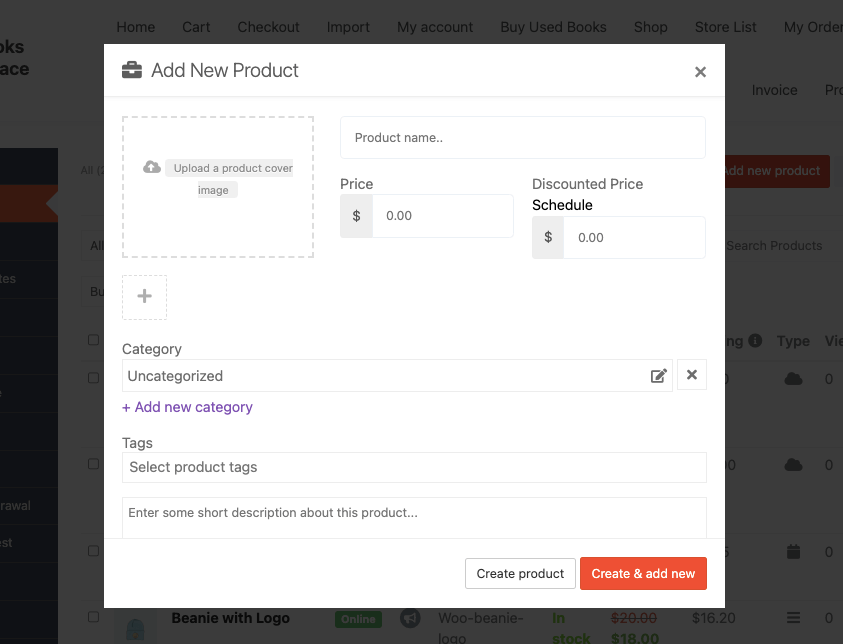
You will see a pop-up where you need to select the categories,
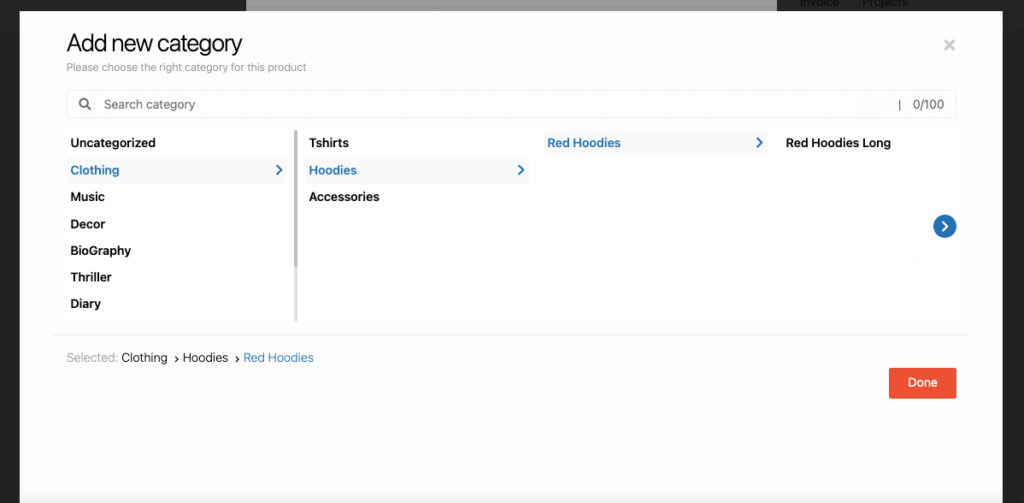
You can also search for categories as well. Just type the category name in the search box, and you will see the matching categories,
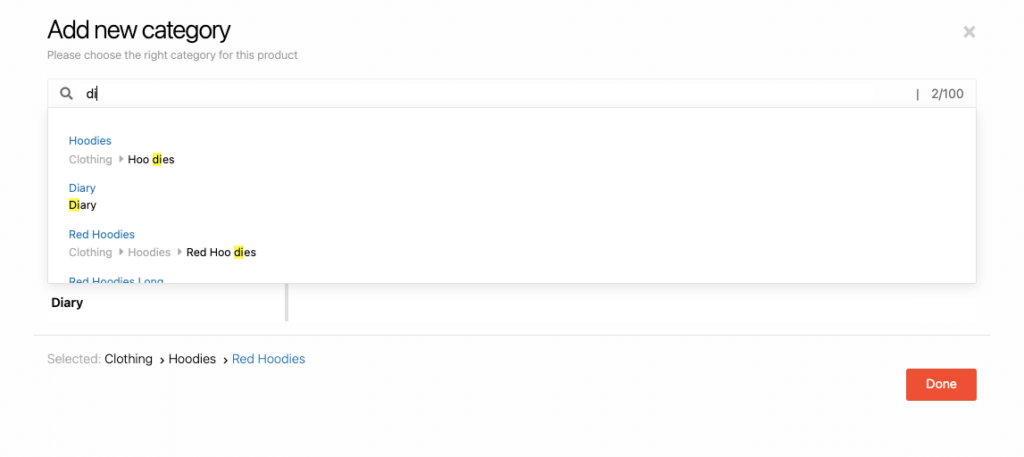
Click on the Done button to finish adding the categories.
Also, you can add multiple categories.
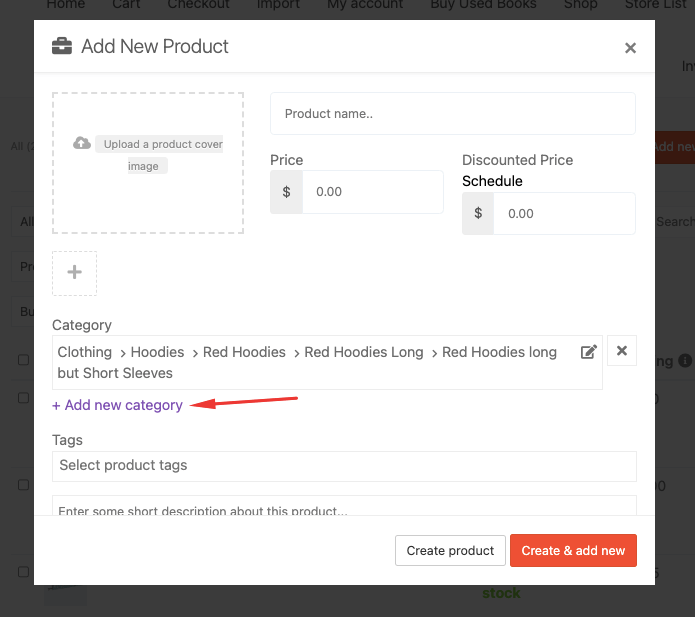
If you want you can add categories while editing the product as well.
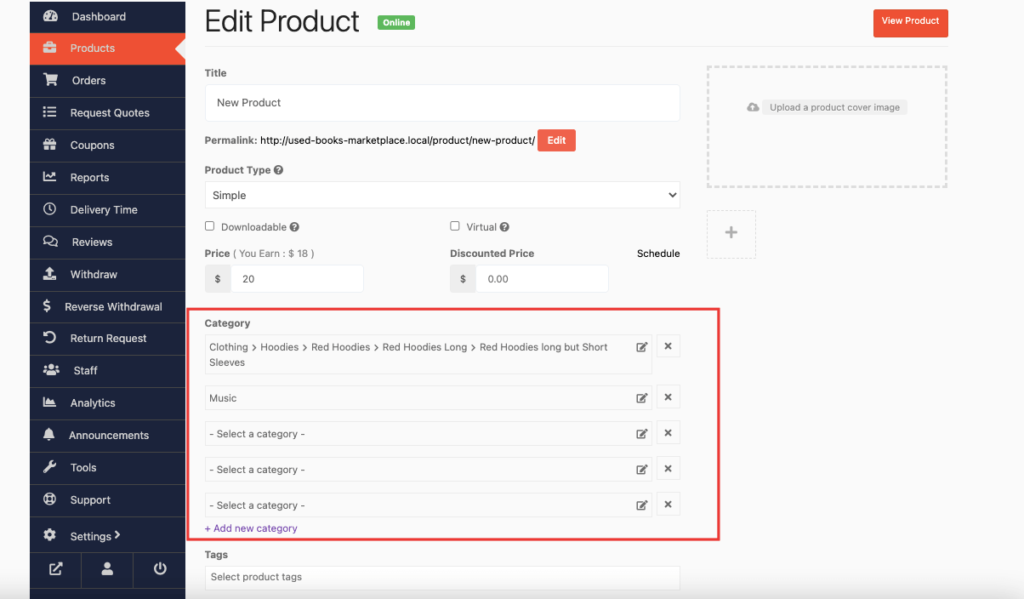
However, if the admin chooses the new Product Status “Single” from Dokan–> Settings–> Selling options then vendors can create one category.
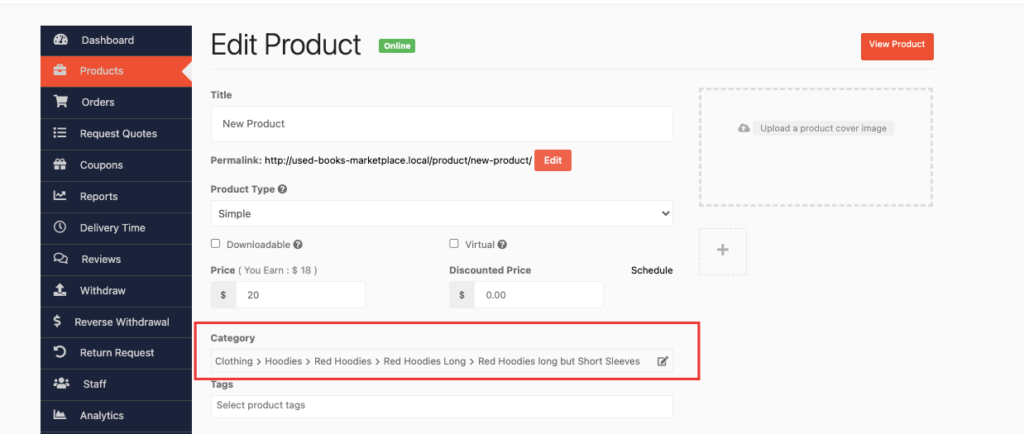
Create Tags
Here using the Dokan pro version, vendors will be able to create new product tags from the vendor dashboard. Previously, vendors were only able to use the tags predefined by Admins from wp-admin→Products→Tags.
Vendors click on Vendor Dashboard>Product>Add New Product. Under the Select Product Tags field, add a tag and Press Enter. The word or phrase will be added as a separate tag.

Admins need to allow this feature from their dashboard.
Admins go to wp-admin→Dokan→Settings→Selling Options. Enable the checkbox for Vendors Can Create Tags. Click on Save Changes.

Now your vendors will be able to create their own tags for products.
After you have provided all the required information, Click on the Create product button. It will create the product and redirect you to the product edit page, where you will be able to add more information about your product.
If you want to create the product and add another one immediately, click on the Create & add new button.
After you have been redirected to the product edit page, there is an option to select a product type. You can select either a Simple or Variable product.
Selecting Product Type – Simple Product
These types of products are simple and have no variants. They are single and standalone products, which does not require any other information to define different variants.
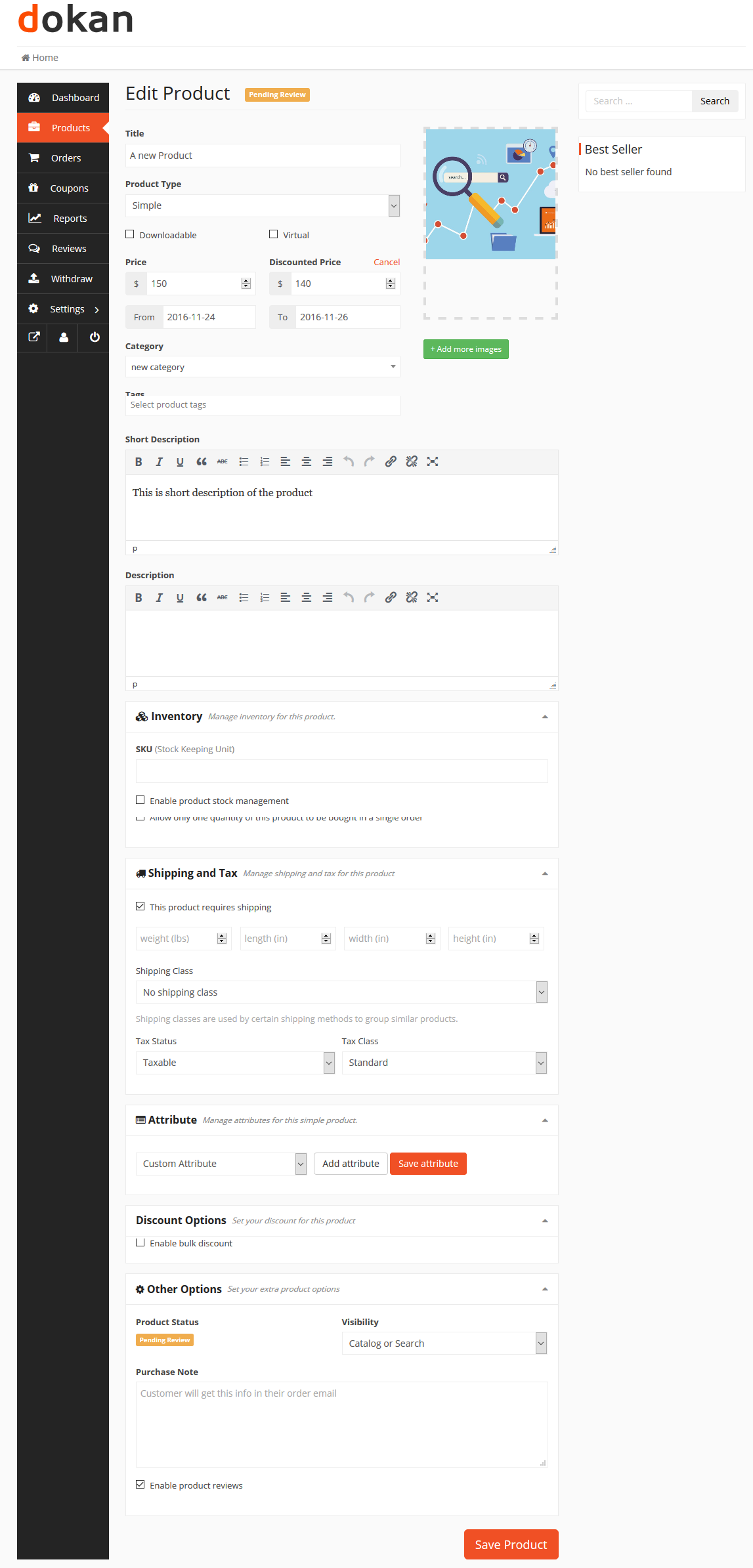
Selecting Product Type – Variable Product
A variable product is a product that has different types of variants. For example, you might want to sell a dress that is available in 3 different colors and sizes. So this option will enable you to add the colors and sizes you need. You can add variations based on anything you like, perhaps the material used or the stitching style.
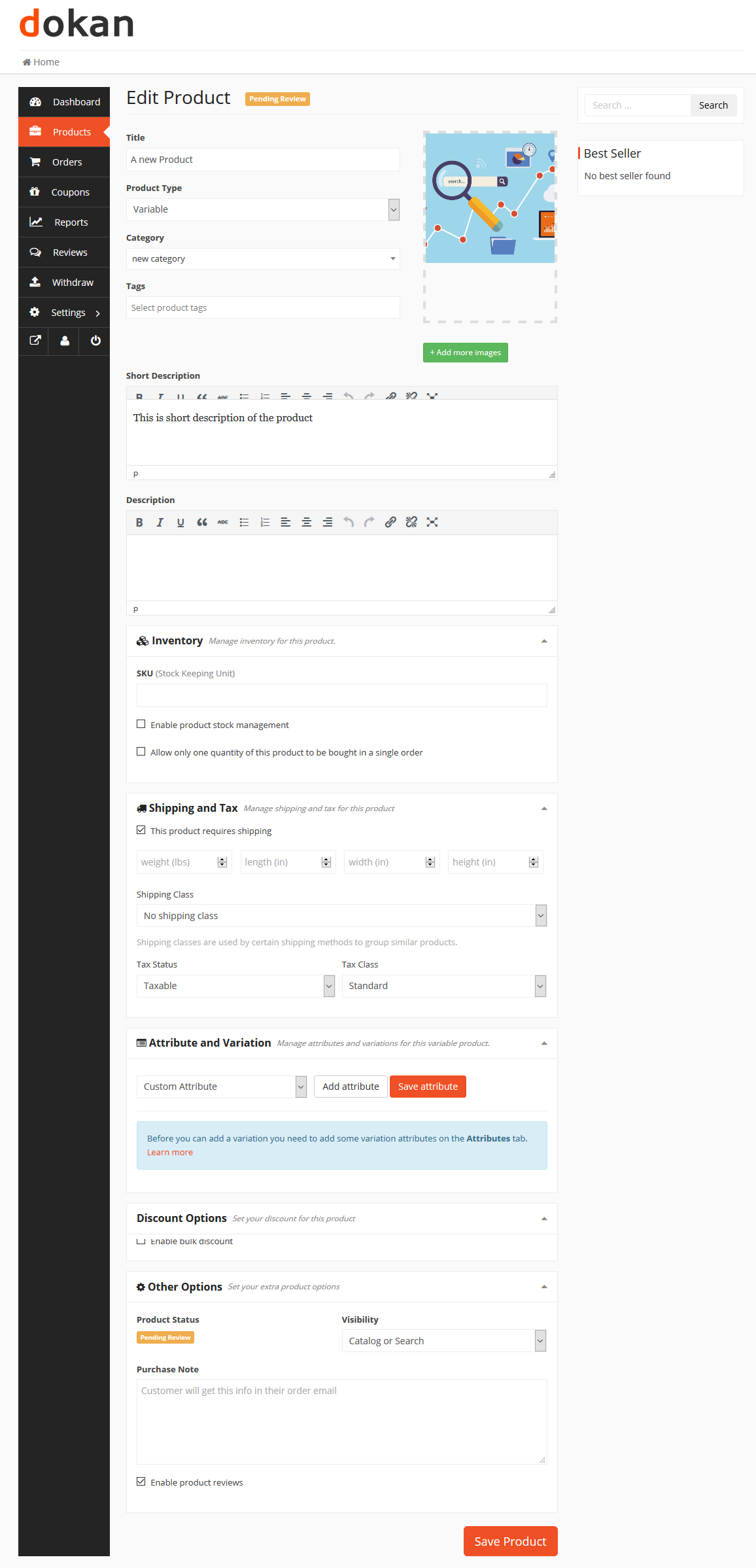
Variations can be created from two places-
- By admin from backend
- By vendor from product creation page
It’s better to create variations from the admin panel. Because it will save the vendors time and prevent from creating duplicate entries. Of course, the admin will not always know what kind of variations a vendor might need.
So he will create a common one and if those do not match the needs of the vendor, then the vendor can create the variations as he needs.
The backend attribute creation and adding feature might seem a bit complicated to some users. So we have streamlined the variation adding and creation process in our interface to improve the user experience.
To create a variation from the frontend, the vendor has to select This Product Has Multiple Options. Then some new fields will appear to input the variations. If you already created some variations from the backend, then you can select them from the dropdown on the top right and click Add Option.
If you do not need all the attributes in your product, then you can remove or add more if you want.
Check this video on how to create a variable product →
Now if you need custom variations and attributes of your own, then you have to select Custom Attributes and then click Add Option. Then two blank fields will appear to input the variation name and attributes.
You can add as many variations and attributes as you want. When you are done, check the box Create variation using those attributes. The system will make all the combinations and will prompt you to add prices for those variations.
If you want to disable any variation, then you can uncheck the box on the left.
Quantity and variation picture adding functions will not be available right away. You have to save the product once to get those options. Right after saving the product, the fields above will have a pencil icon on the right. Click on that to add more details to the variations.
Selecting Product Type – Grouped Product
To learn about the grouped product go through this tutorial.
Inventory and variants
This section holds a bit of complicated information. None of these fields are mandatory. If you do not need to add stock quantity and your is just a simple product, then you can totally skip this section.
But if you are creating a downloadable product or selling a dress or t-shirt, which has multiple sizes, then you should read this section carefully.

What is SKU?
SKU stands for Stock Keeping Unit. It should be a unique set of characters which will not match to any other product.
Enable Product Stock Management
Let’s say you have 10 pieces of the product and you don’t want to receive after orders are placed for 10 units. If you enable stock management and enter 10 in the quantity field, then after 10 units are ordered, this product will show a message that all the quantities are sold and there is no stock.
But, you might want to take some pre-orders before your next batch comes up. So you can Allow Back Order to let the customers place orders even if the product is out of stock.
Downloadable Product
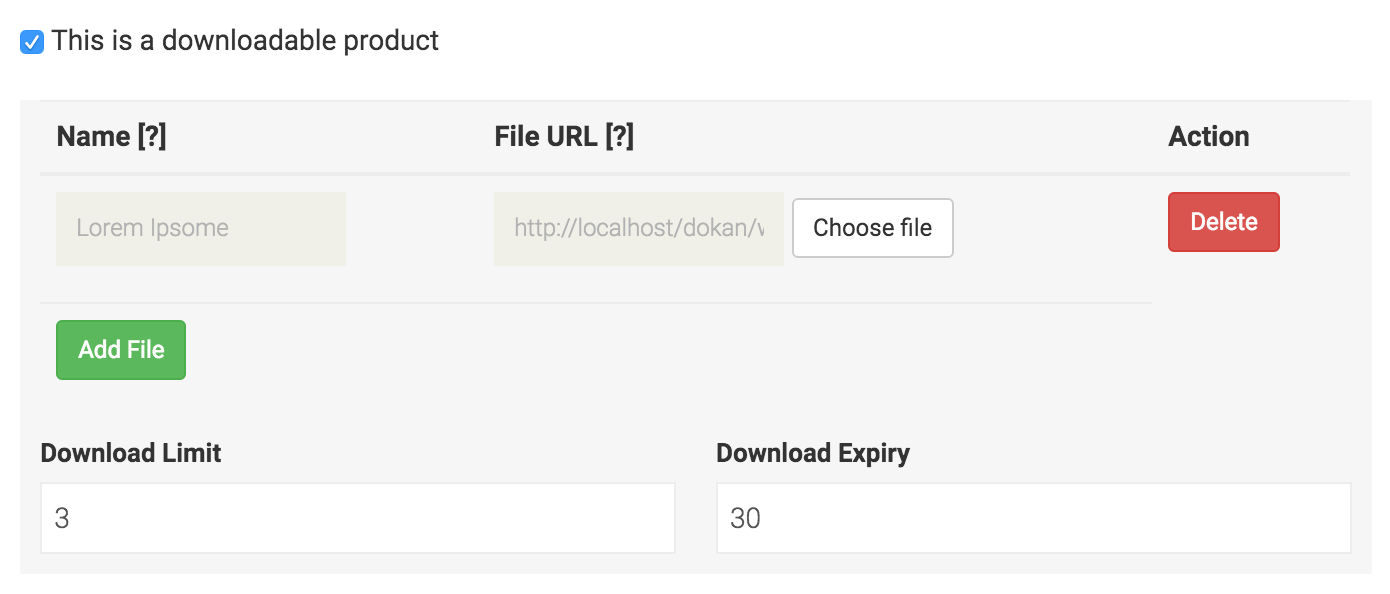
If you are selling photos, music, software or any digital product, then this is the option to use. If you click on the Add File button, three more fields will be added.
The name field defines what the downloaded file name should be. We are letting you define that because you might name the original file to something like “new-album-updated-jan-12.zip” and you want the user to download the file as “New Album”. So this option will be useful for you to serve and organize better.
If you are serving the files from your very own site, then you can click on choose file and select. But you can also serve the file from Dropbox, Google Drive or some other file hosting site you like.
Shipping
Dokan has built-in support for WooCommerce shipping classes. Please read the following docs to know about how to activate and configure them-
- Configure WooCommerce Shipping Classes
- Activate and Configure Dokan Shipping
If you do not want to use Dokan shipping in your site, then you may not enable it from WooCommerce settings. But after activating Dokan Shipping from WooCommerce settings, the vendor still needs to activate the shipping method from his dashboard settings.
So to be able to use the state-based shipping feature of Dokan, it needs to be activated from two places-
- By Admin from WooCommerce Settings – it will activate the feature sitewide.
- By Vendor from Dashboard Settings – it will allow the feature on the specific store.
After activating the feature from both places, you will get the default shipping price override option. Else only the shipping class selection will be available.
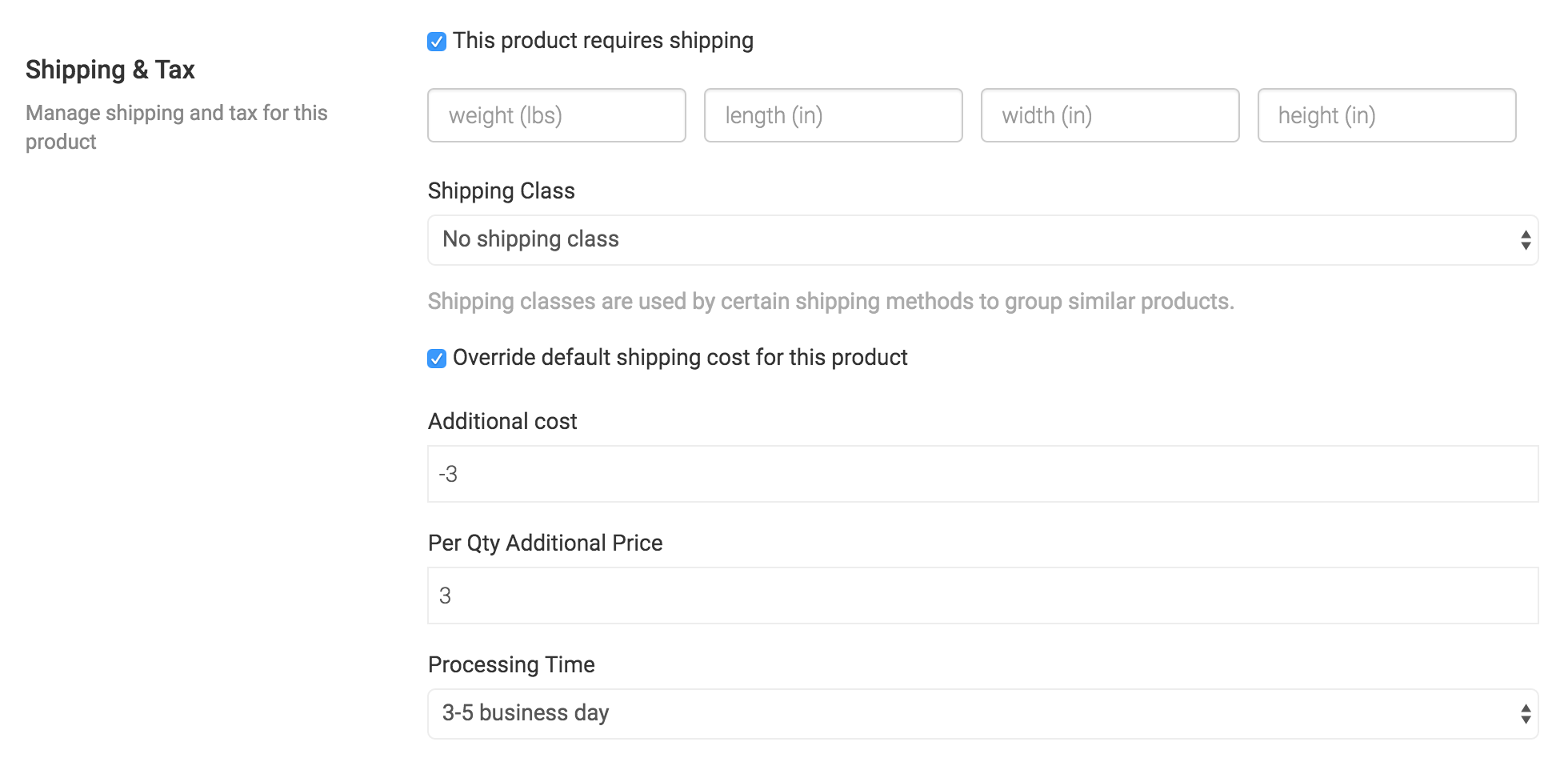
If you have enabled only Dokan shipping and configured the costs in the dashboard settings. Then you might leave all the settings as is. That means you do not have to input any data in this section. None of the fields are mandatory here.
Tax
Here the vendor can only select the pre-made tax classes. If you have missed the tax configuration part in our documentation, you can read it here.
Select Product Type – External/Affiliate Product
You can create External/Affiliate products on Dokan. That way you can create products and redirect them to your Affiliate sites.
While creating a product, you need to select the External/Affiliate product type from the dropdown menu.
Also, you need to add the link to your site in the URL section and define the button name.

Then you will see the product on the View Product page.
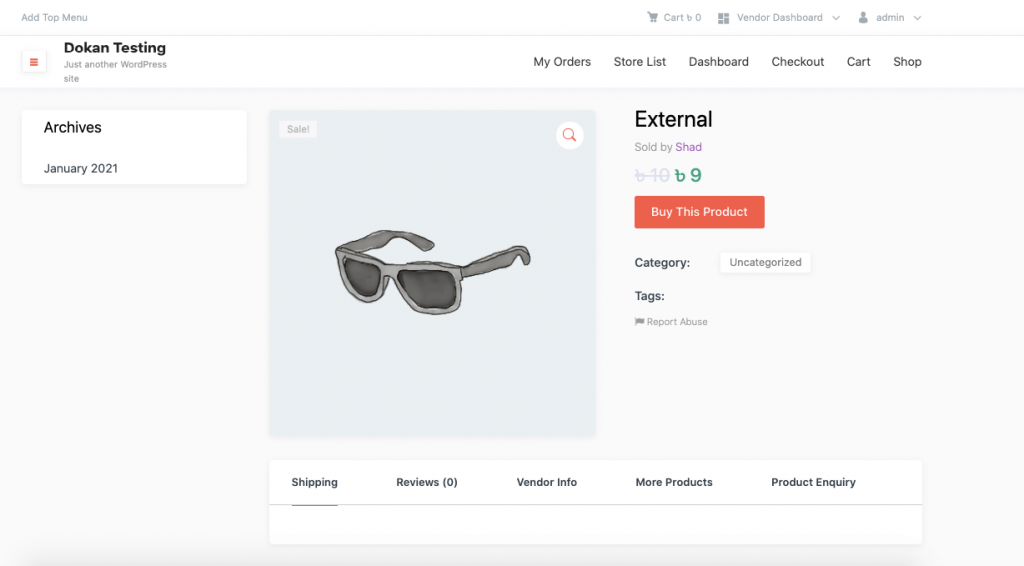
So, when a user clicks on the button he/she will be redirected to the URL page.
Other Options
Visibility: The visibility option defines the privacy of the product. By default “Catalog and Search” is selected. But if you want the product to only appear on the category listing page, search results, or want to list it as a hidden product, then you can select the option respectively.
If you select any other option than Catalog and Search then the product will not appear on the site other than the store page.
Purchase Note: If you want the customer to receive a custom message right after purchasing the product, you can paste that in the box.
Reviews: If the vendor does not want to receive reviews for the product from the customers, he can turn it on or off.
Create a product from admin panel and assign it to a vendor
Products can be created from both the backend and frontend. If you want to create a product as an admin, you can do that from wp-admin → Products → Add New.
When you are done with inserting all the data, you will see an option to assign an author. If you do not find the author input box, then you have to enable it from “Screen Options” from the top right corner of the screen.
Same applies to product import via CSV and other formats. You can import them using WordPress importer and assign them to vendors by editing.
Blank Product Page
When vendors setup their shop for the first time in the marketplace, they may not have any products. However, they can create their products from the Blank Product page.
They can create new products or import products as well. The import product option is available in the pro version.
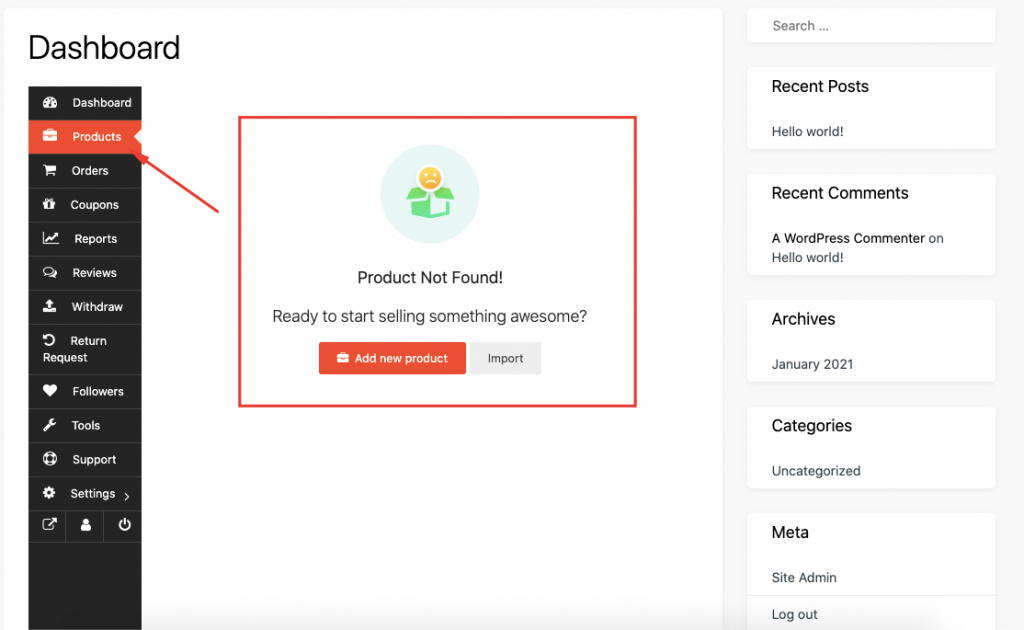
Digital & Physical Product Types Selling Options for Vendors
Now, you can enable your multivendor marketplace to sell only physical products or digital products. The new version of Dokan Pro will enable you to do that.
Navigate to Dokan–> Settings–> General Settings. There you will find three options under “Selling Product Types”.
- I plan to sell both digital and physical products
- I plan to sell only physical products
- I plan to sell only digital products

Now, if you choose
I plan to sell only physical products
When you choose this option, that means the vendors of your marketplace will only sell physical products. When you enable this option you will see that the Downloadable and Virtual options are disabled for all the products.
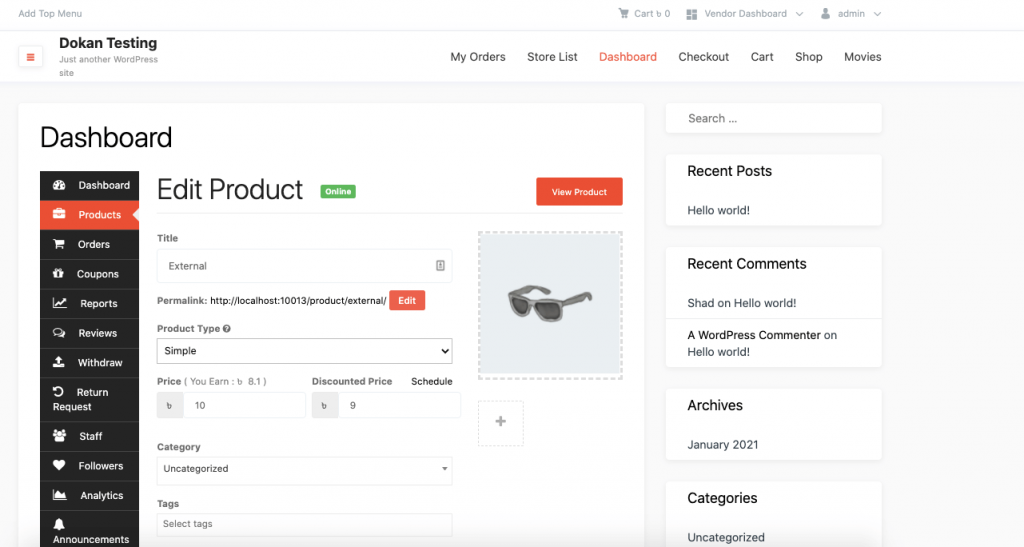
If you create a variable product, you will not find those options in the variations zone as well.

I plan to sell only digital products
However, if you choose to sell only digital products then you will not find any Shipping options. We have disabled the shipping options when your marketplace are selling digital products as you probably don’t need shipping to sell them.
But, you will find the Downloadable and Virtual option enabled.
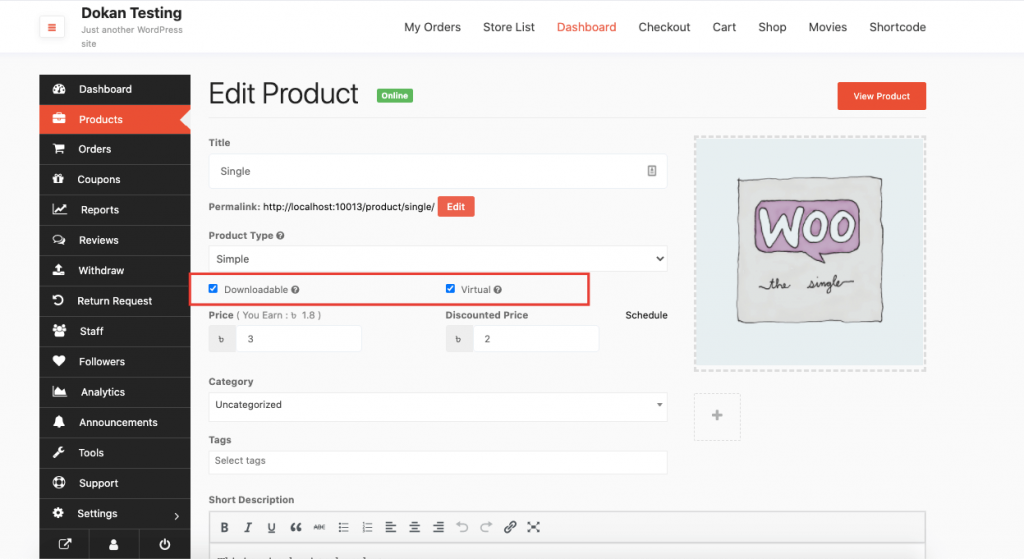
Also, for a variable product, you will find those options in the variations zone.
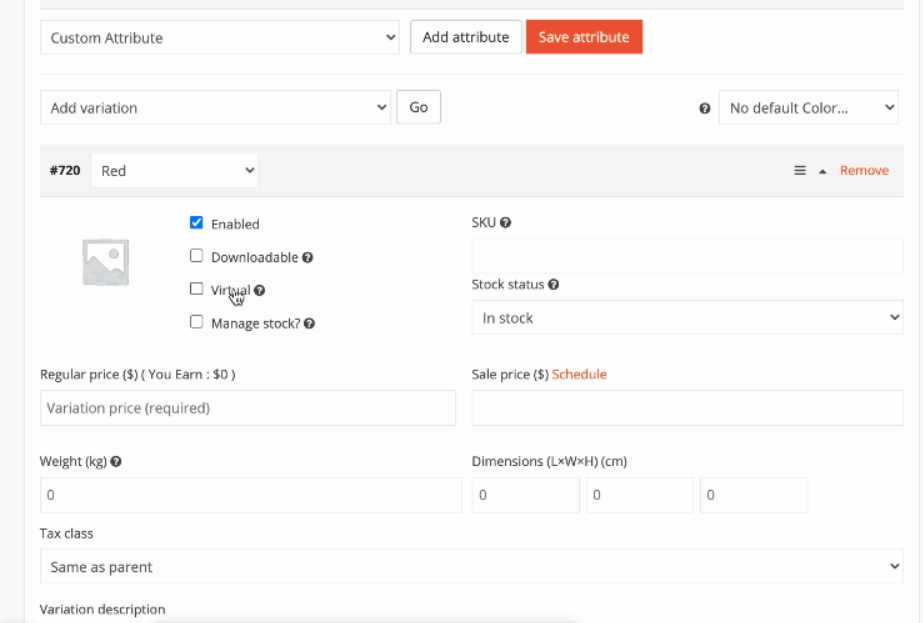
Note: The vendors will not find any shipping options on their vendor dashboard. Also, we have disabled the Dokan shipping options from WooCommerce–> Setting –> Shipping. The existing data will not work either.
2 Filter Options for Product Listing Page
Now you can filter the products on your product listing page according to the product type. Just select the product type and click on Filter. You will see the filtered products on the list.
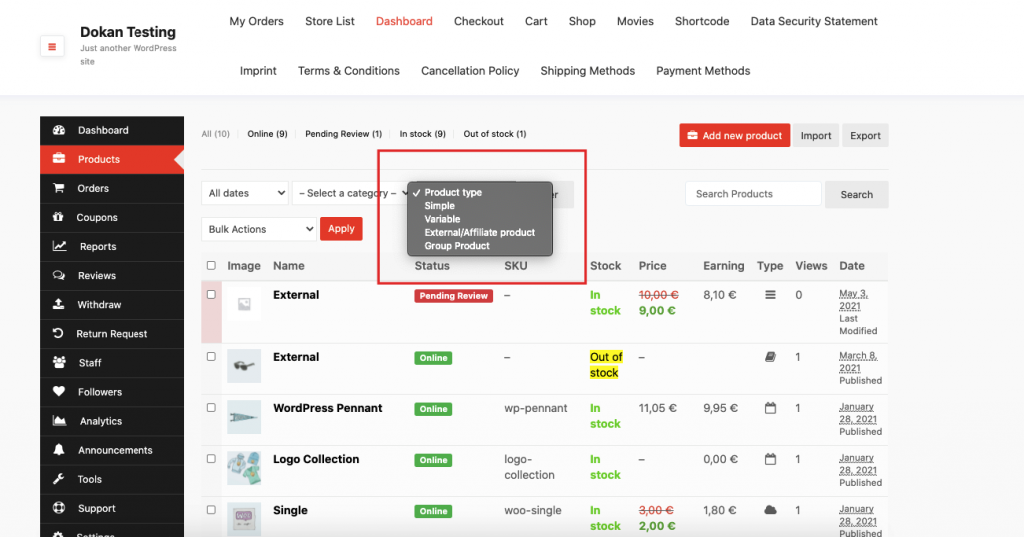
Also, you can filter the products based on their inventory. You will get two options
- In stock
- Out of stock
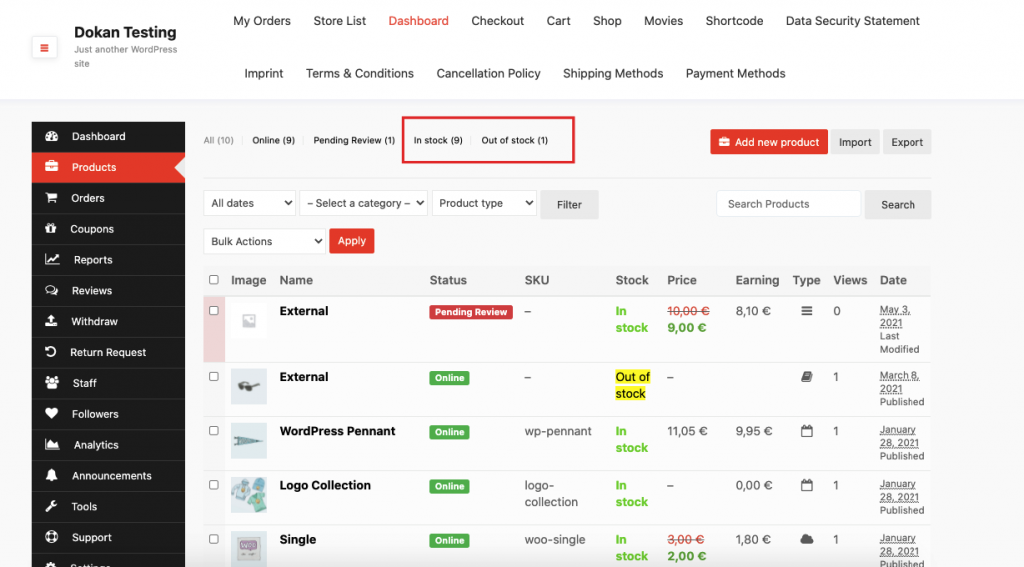
Hide/Show Product Filter Options
As an admin, you can hide the product filter option from the Single Store Page. Admin can do this from the customize option.
Click the Customize option of the top of the menu bar.
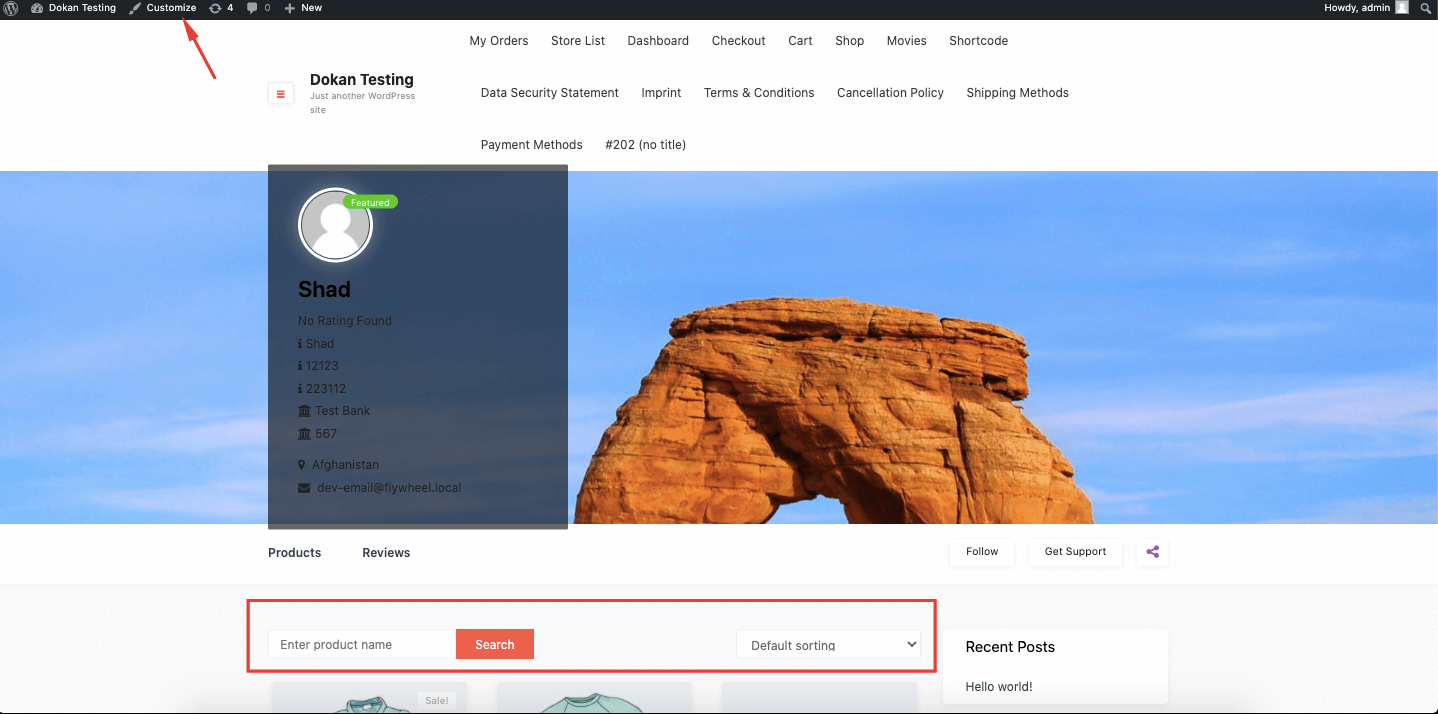
Now, select the Dokan option from the side menu bar.
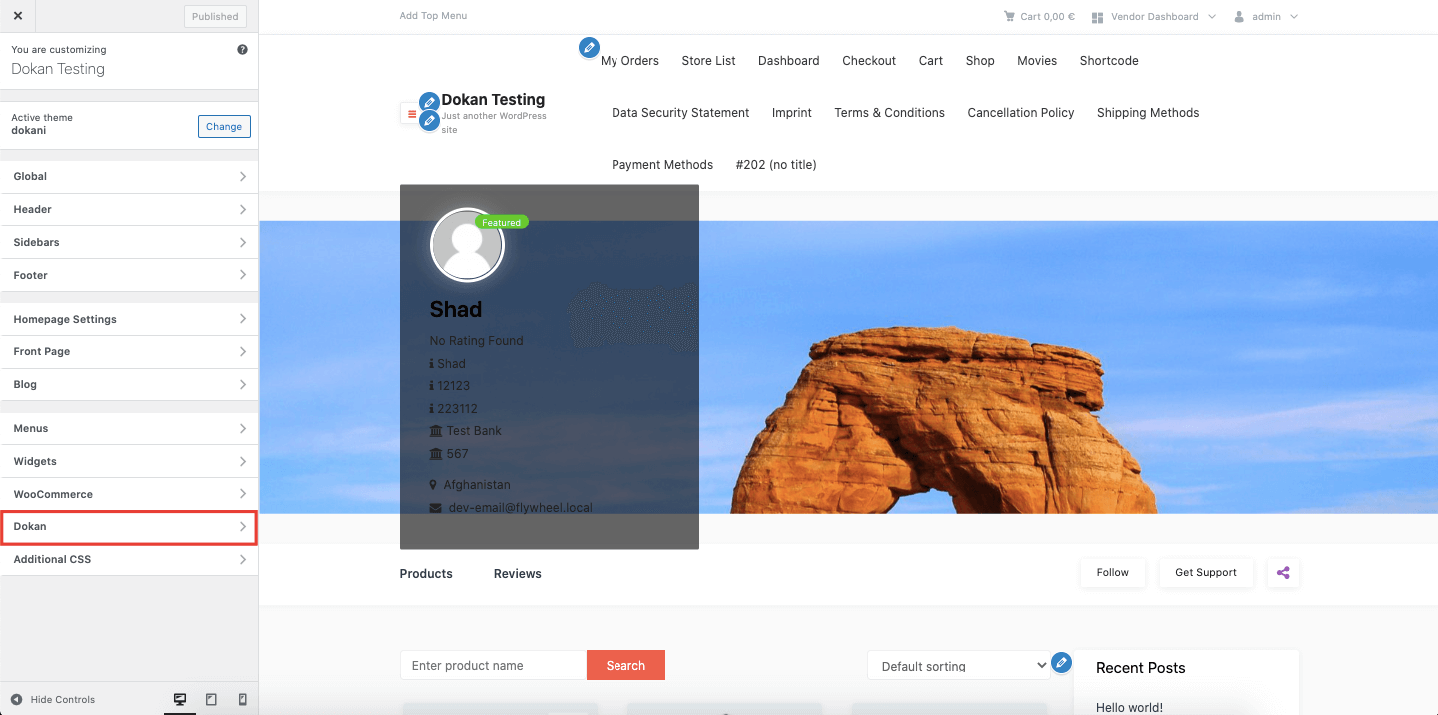
Next, select the Store Page option.
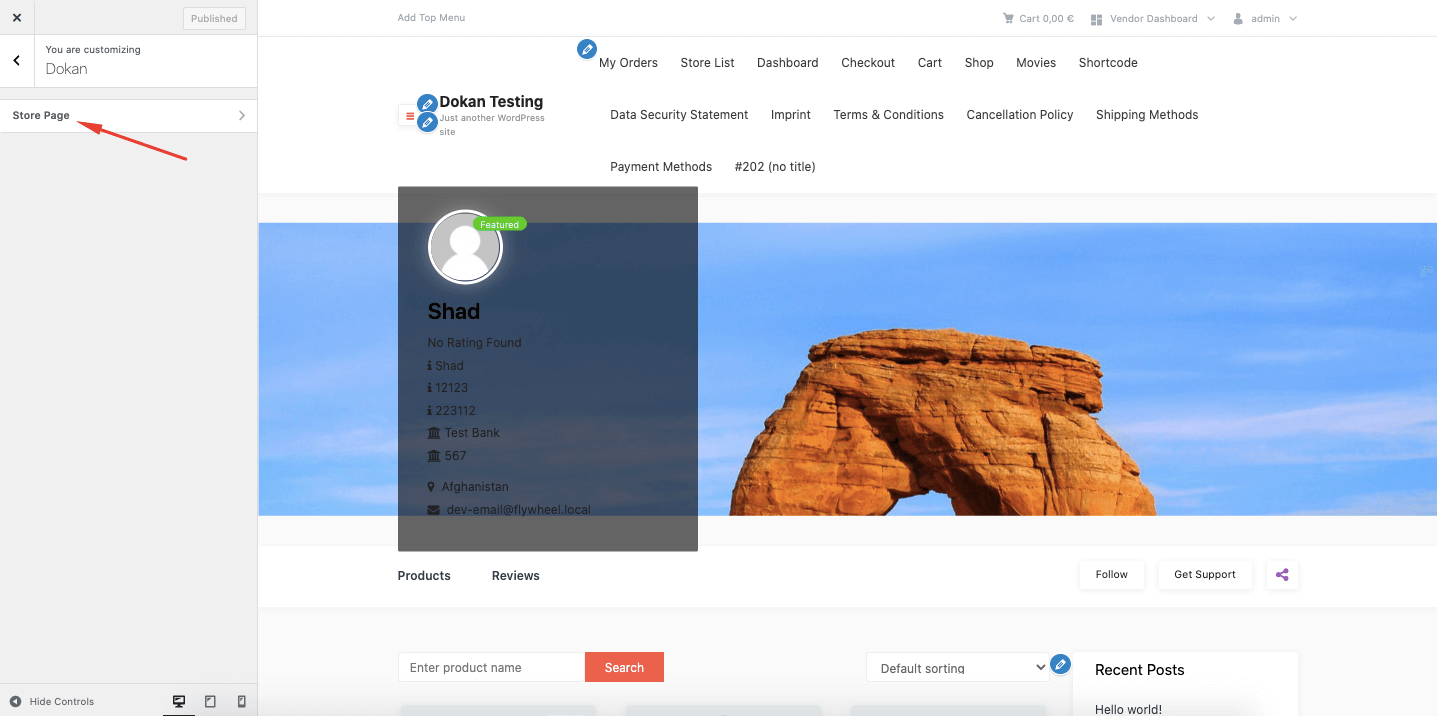
Enable the Hide Products Filter option from the Vendor Products.
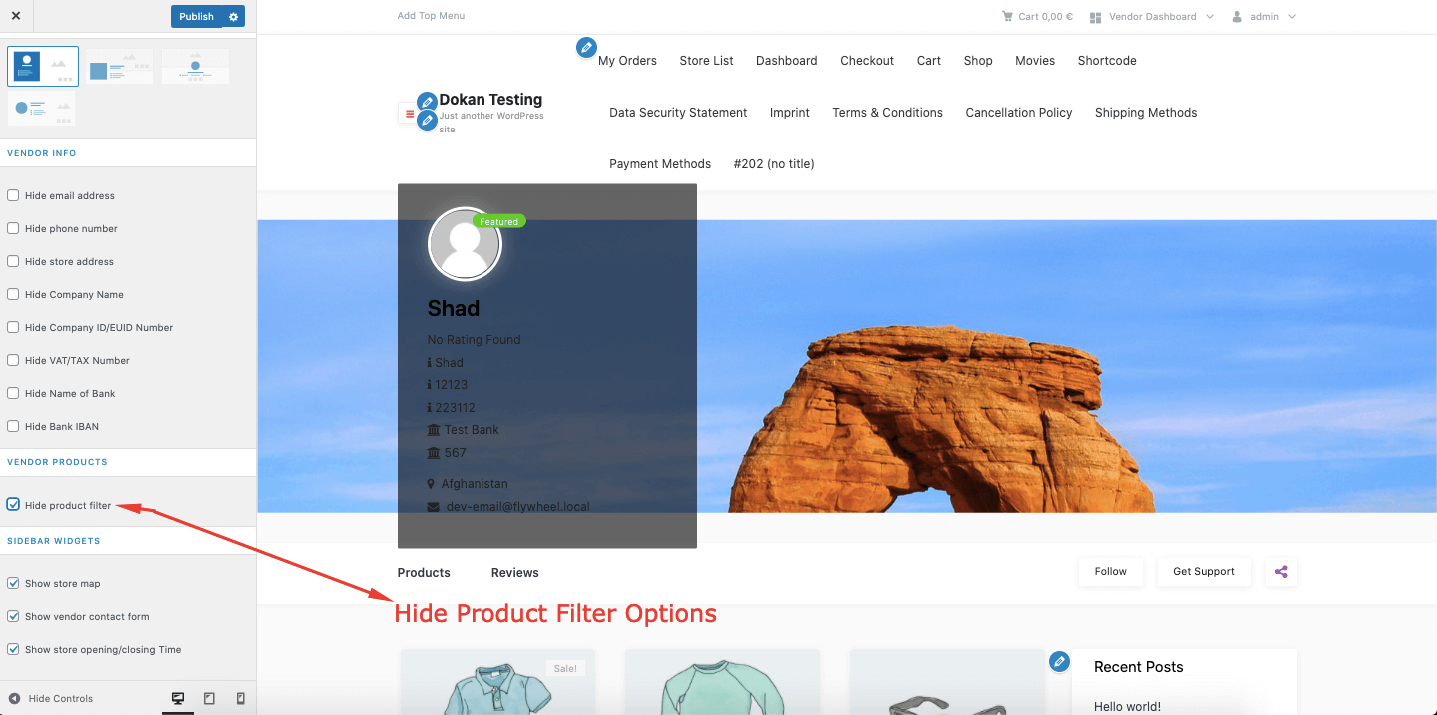
That is how admins can hide product filter options.
Product Bulk Edit for Vendors
Just like the admin, vendors can now edit the products in bulk from the vendor dashboard. Vendors need to go to Vendor Dashboard–> Products. There they need to choose multiple products to edit. Then click on the Apply button,
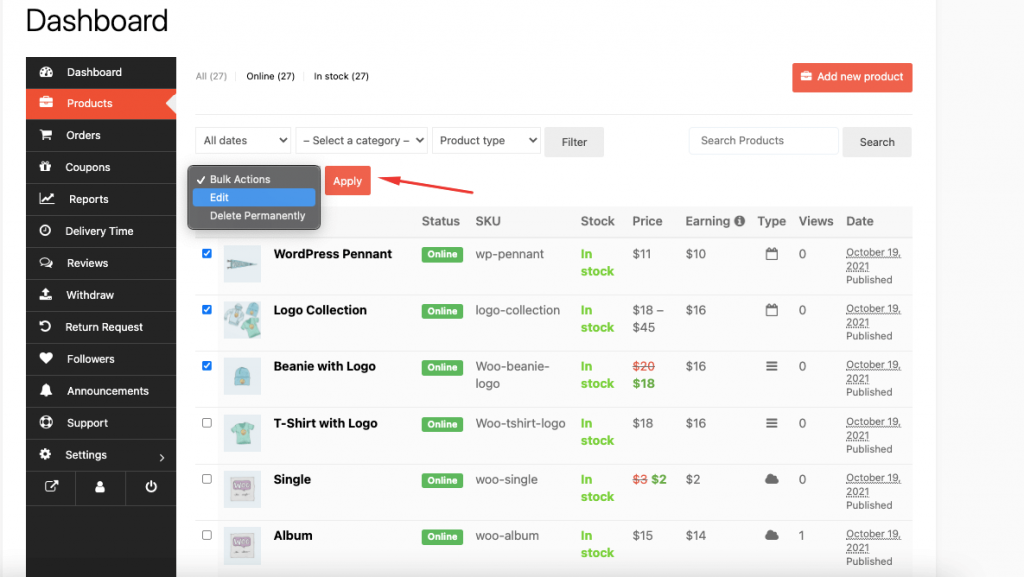
Now, vendors can update/add product categories, change the product status to Draft, and new Tags. Also, they can update product price, sale, weight, shipping class, visibility, change stock status, etc. Click on the Update button to finish.

After finishing the update, they will be able to see the changes in the Product list.
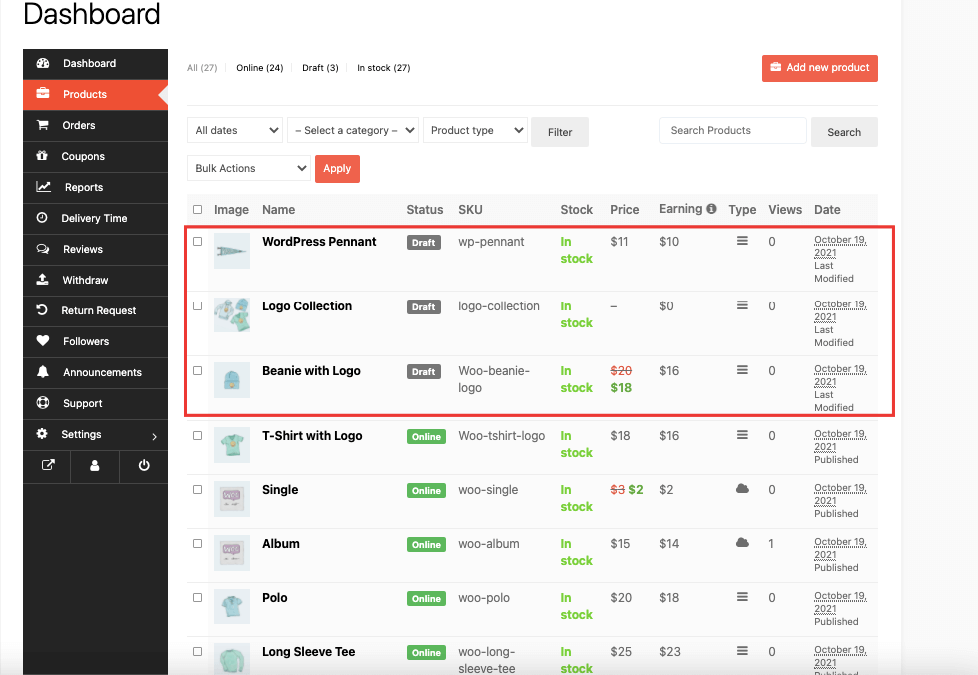
If they click on the quick edit option, they will be able to see the new categories and tags added.
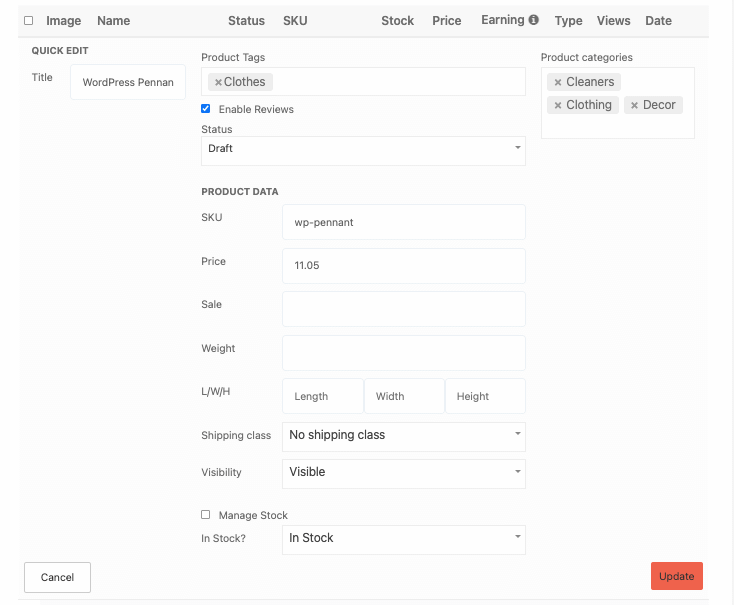
This is how vendors can bulk edit products from their vendor dashboards.
Notes Regarding Product Bulk Edit
- Vendors can only add multiple categories if the admin selects the multiple category option from Dokan–> Settings–> Selling option–> Product Category Selection.
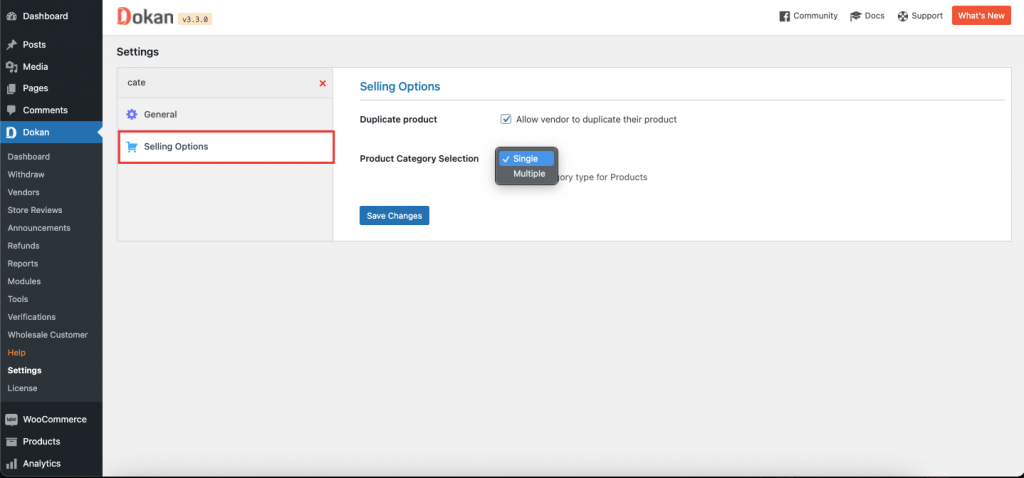
- If the admin enables the “Edited Product Status” to “Set Product status as pending review when a vendor edits or updates a product“, then the product status will be saved as “Pending Review” after the vendor updates the product.
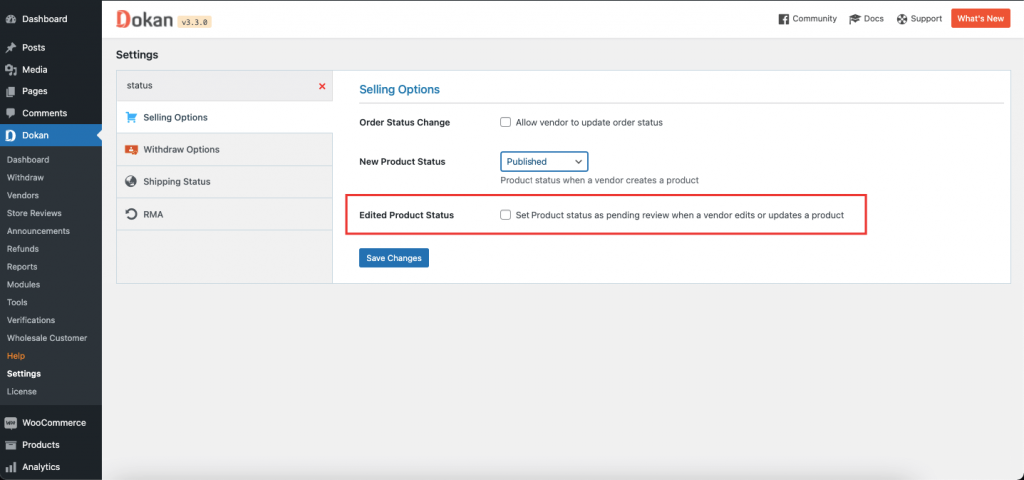
- Last but not the least, vendors can create new tags only if the admin enables the “Allow vendors to create new product tags from vendor dashboard” from Dokan–> Settings–> Selling option–>Vendors Can Create Tags.
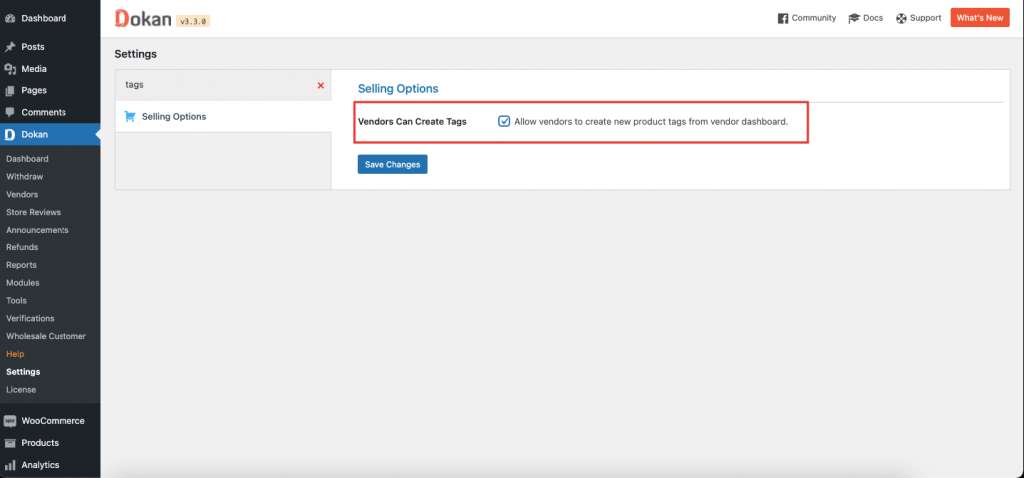
Ask for Product Review
The Ask for Product Review feature allows vendors to set the product status to draft while creating a product using the single-page product creation form.
After the vendor is satisfied with the edit, they can either ask for a review or publish the product directly based on the admin settings and vendor capability.
